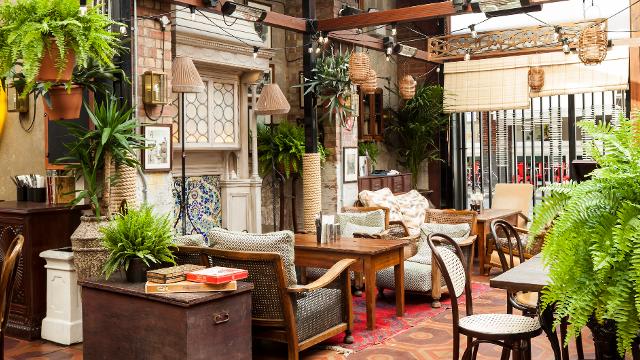


Thakrar thinks after you have the strategy and business model, there are two main levers: processes and culture. “It is a very sensible template – most business people have it – which is revenue, costs, profit, capital, return, right – and that's how the world works and returns are really important because that's a percentage and it's probably about 15 or 20 if you're lucky and, you know, happy days.” “When you come into business from somewhere like management consulting, you have a template in your head,” the former management consultant explains. If you see it as a cold, sterile business then I think it’s harder.”

When you fall in love with the idea and you really get focused on what it is that makes people love restaurants. But in the end we made it work, but paradoxically I think you make it work when you treat it non-commercially. Perhaps ironically, given Dishoom’s runaway success, Thakrar doesn’t recommend the restaurant business for anyone looking to make a quick buck. But initially he also thought it would be a good way to make money. His love of Indian food and culture inspired him, of course. Thakrar wanted to build something beautiful: “I want to feel a sort of mood when the music and the typefaces and the design and the colour of the wall and the pictures and the food and tastes and people rushing around and the lighting all come together to just make me feel like I want to be here.” Thakrar and his cofounders felt there was more to say about the food and culture – specifically paying homage to the food, architecture, vibe and culture of Bombay’s Irani cafés to communicate something fresh about India (which is eloquently covered in his book). But when you know someone well over centuries, the relationship can turn into cliches and I think Brits would think of India in terms of Bollywood, cricket, curry houses, days of the Raj, Maharaja – those sort of cliches." As usual, this will go great with just about anything, but some suggestions are: basmati rice, garlic naan, or even more chicken via Dishoom’s chicken biryani (biryani is like a mixed rice).Pointing to a copy of William Dalrymple’s The Anarchy, which recounts the rise of the East India Company in the second half of the 18th century, Thakrar explains that the deep history between the two countries “left us with a feeling that we know India well. You’ll still have to marinate the chicken, and it’s still best to do that overnight, but you can cut it down to just an hour or so if you need to. The smoky char is great, but the ease and simplicity of this one pot wonder is even better. If I’m honest, I’ll pretty much reach for this recipe every time we want need curry for dinner, unless friends are coming over, or the grill is already fired. This version is great for a relaxing weeknight dinner that’s just simple and executed well, much like Dishoom itself. From a pure taste perspective, that one is better, for sure. This is a one pot, Instant pot, quick version of our OG Dishoom Ruby Chicken Curry post awhile back.

It’s a total crowd pleaser and that means that this curry is finely tuned to make just about everyone happy. It’s not all that authentic, pan-Indian, and definitely toned down for the British palate (and ours too). London has loads of great restaurants and we’ve eaten at a lot of them, but through it all Dishoom is a unique, accessible place that we can just relax and enjoy, and send all our friends to if asked for recommendations.ĭishoom is like the Momofuku of a) Britain and specifically b) Indian food. There is only one city in the world I never have to think about what my favorite restaurant is: London, because of Dishoom.


 0 kommentar(er)
0 kommentar(er)
